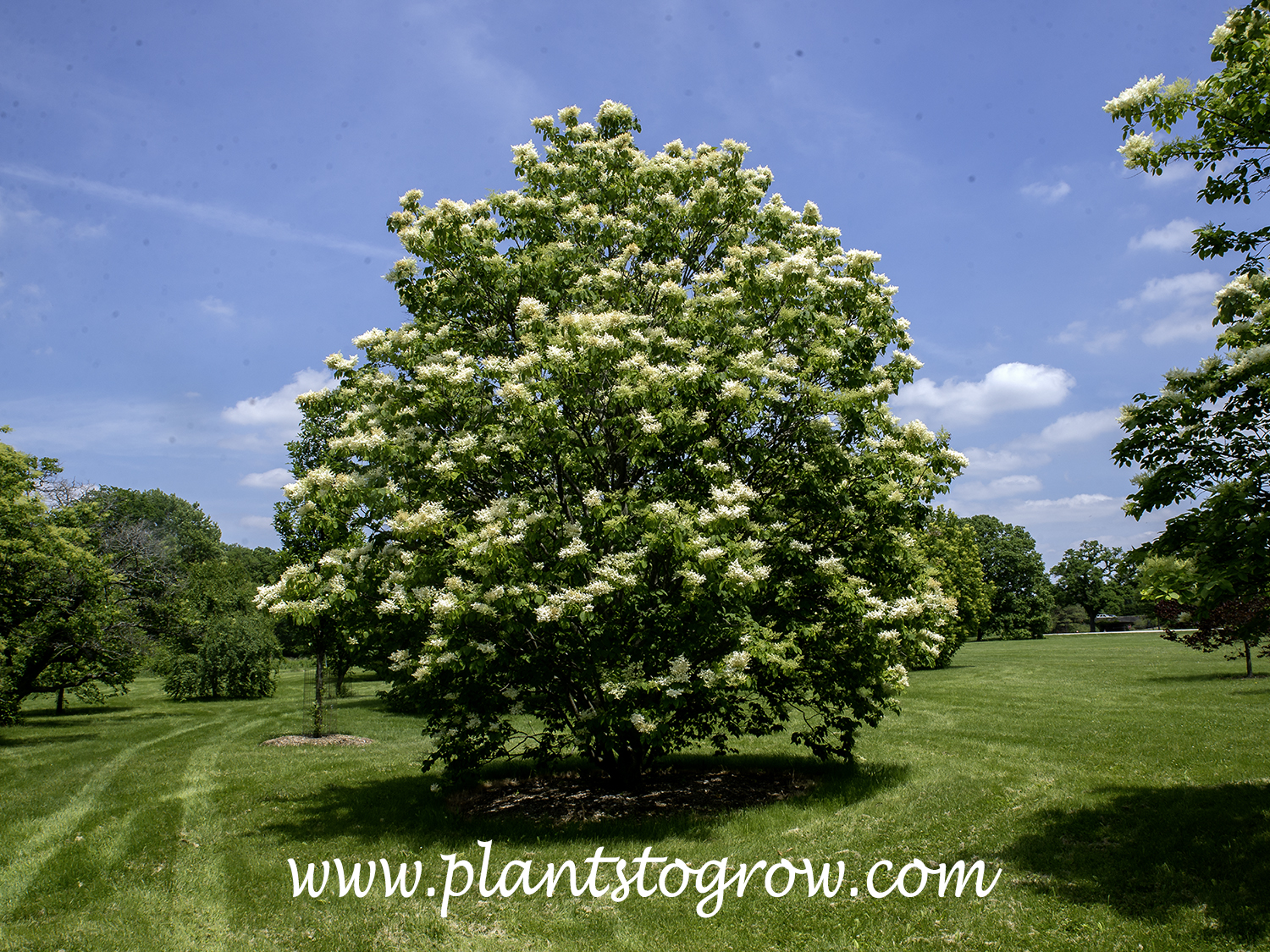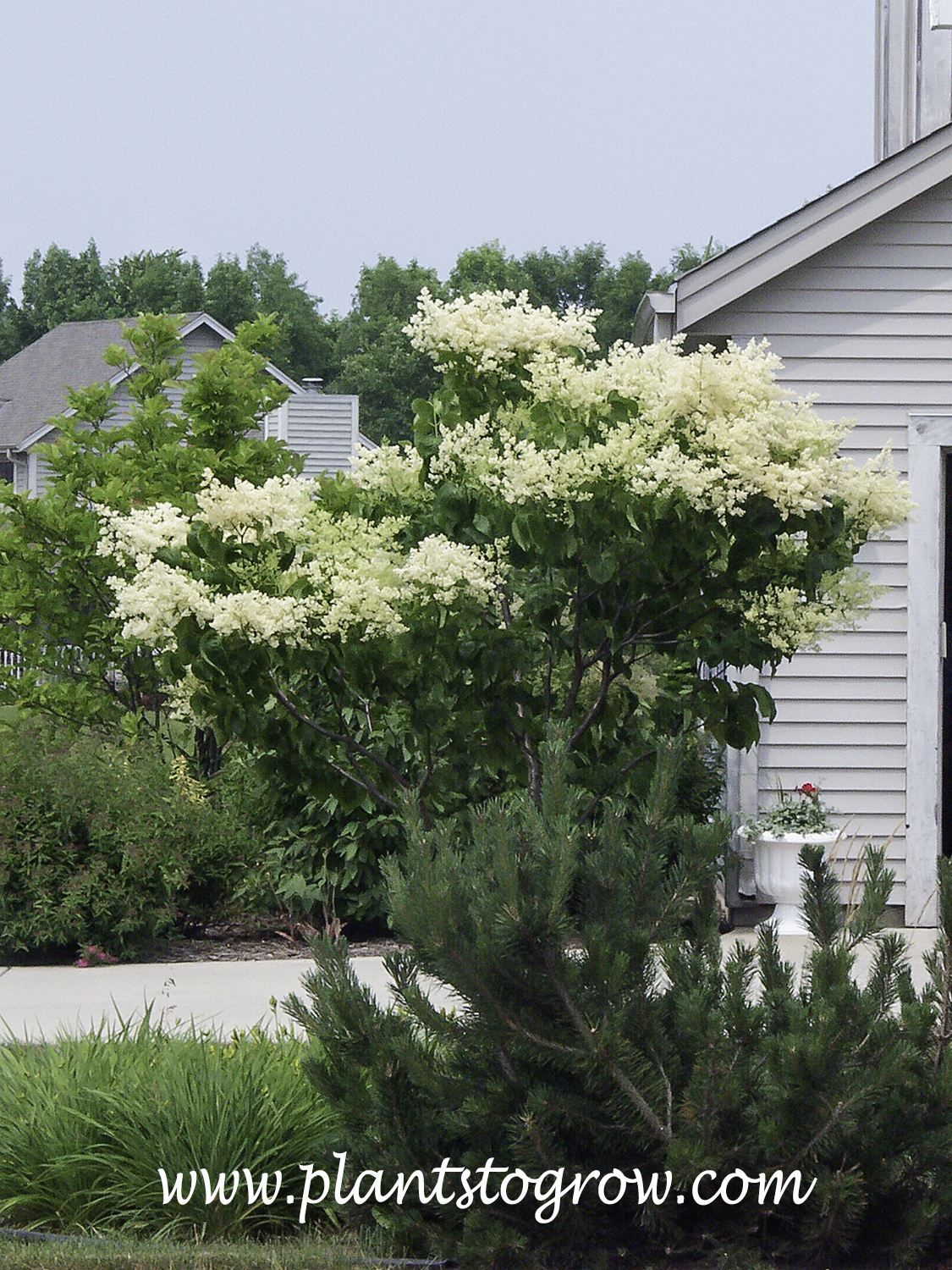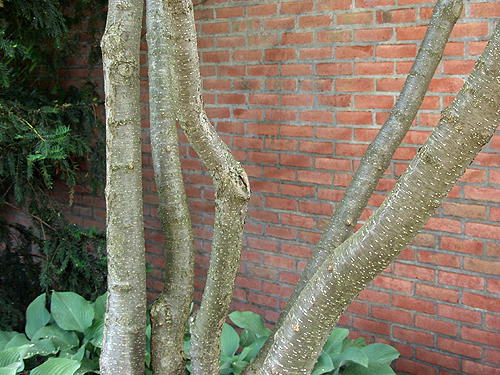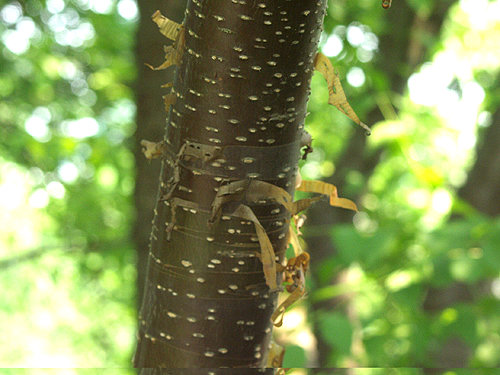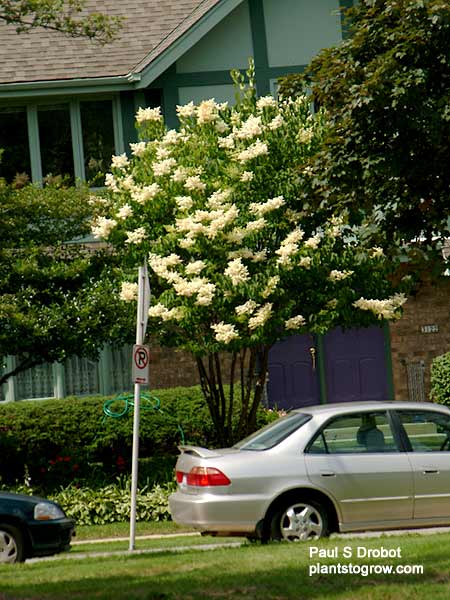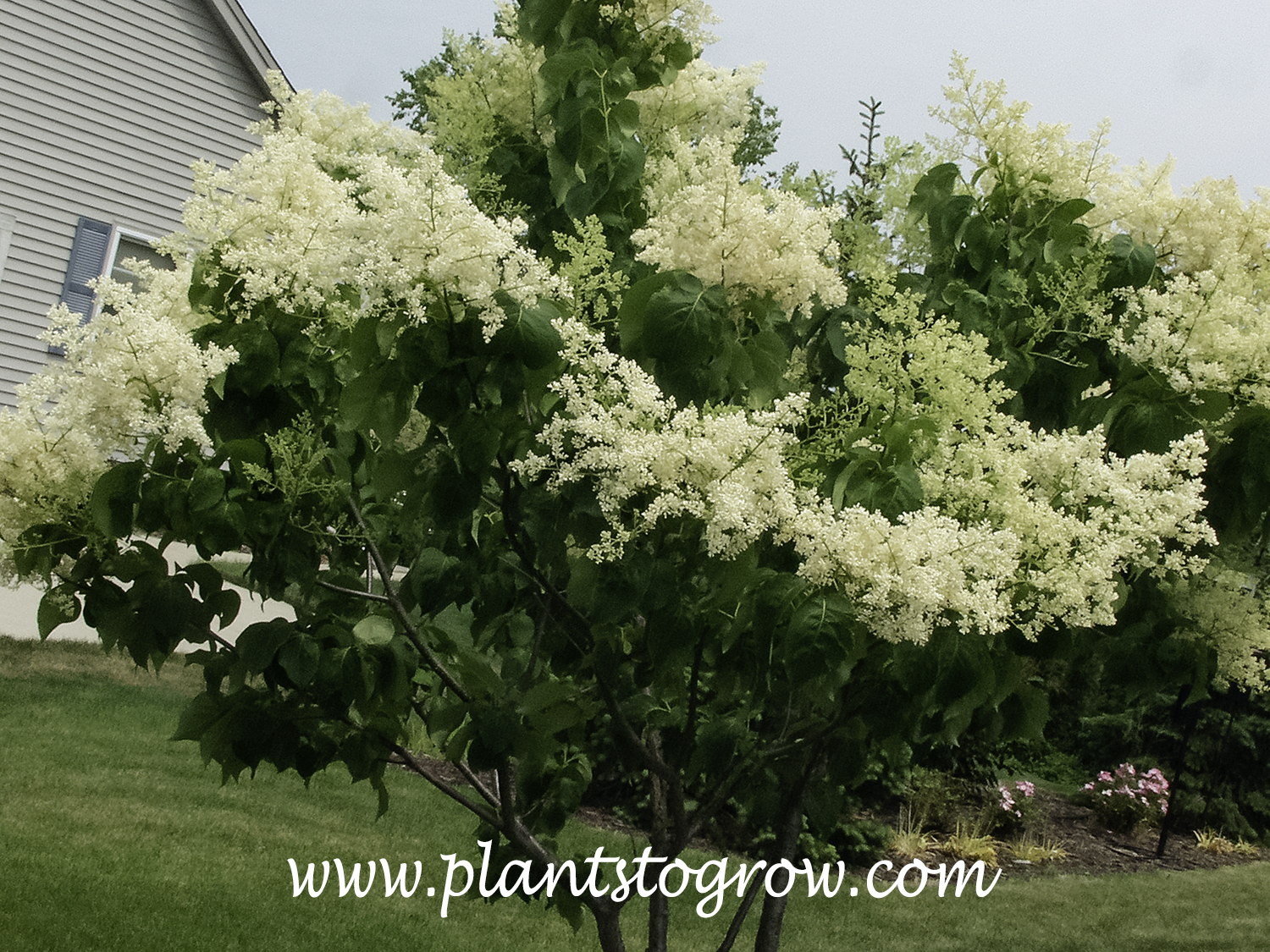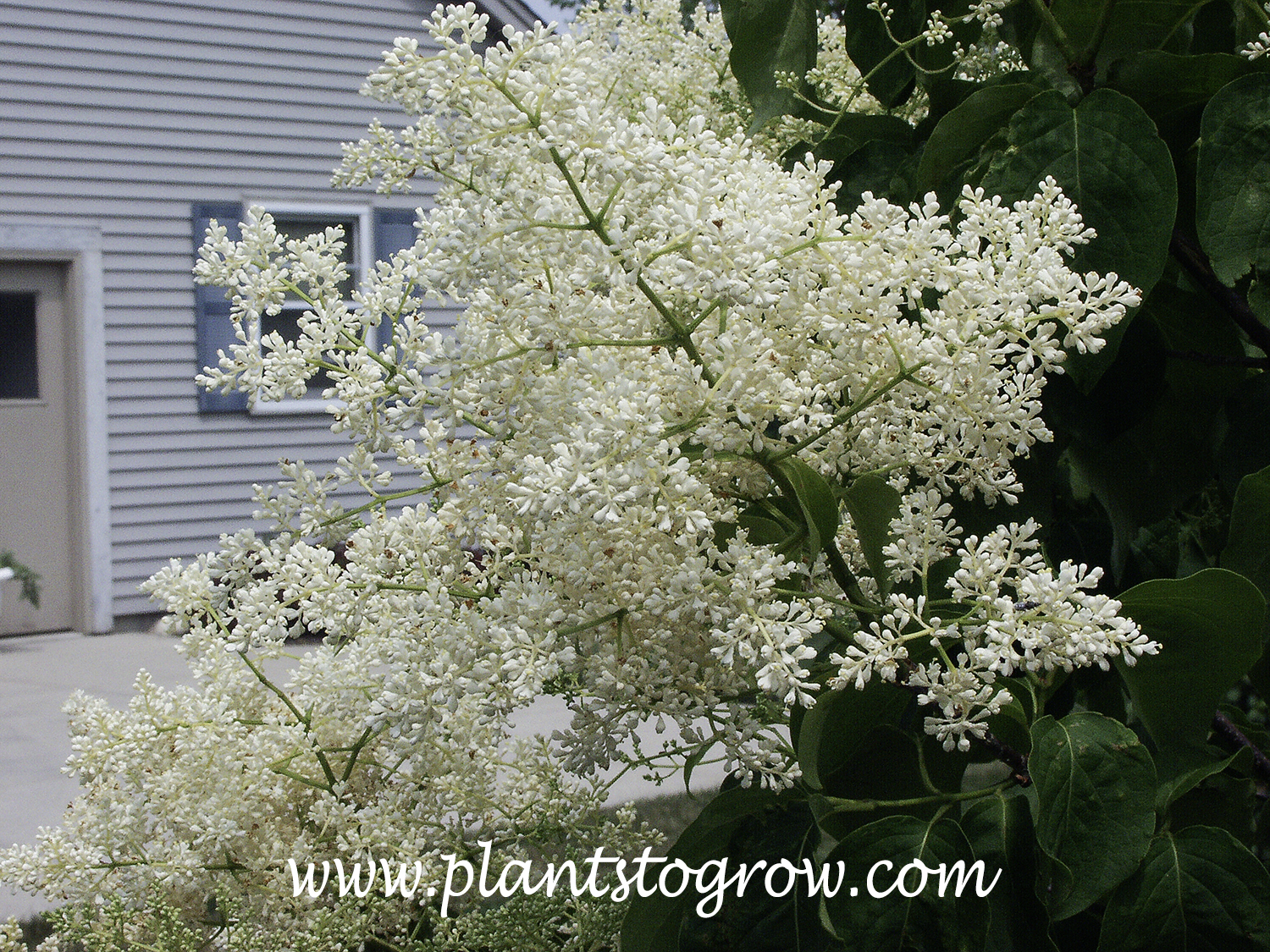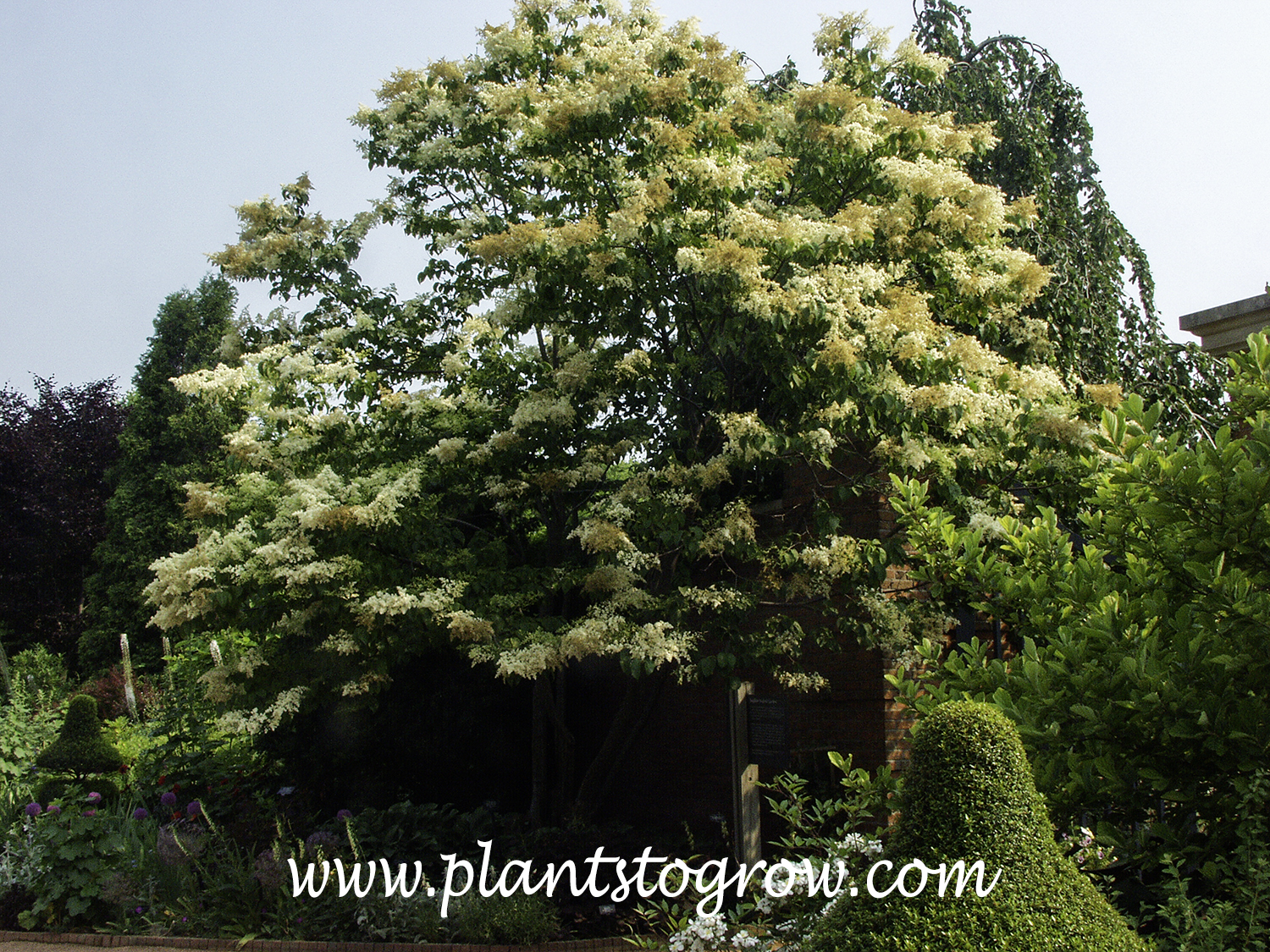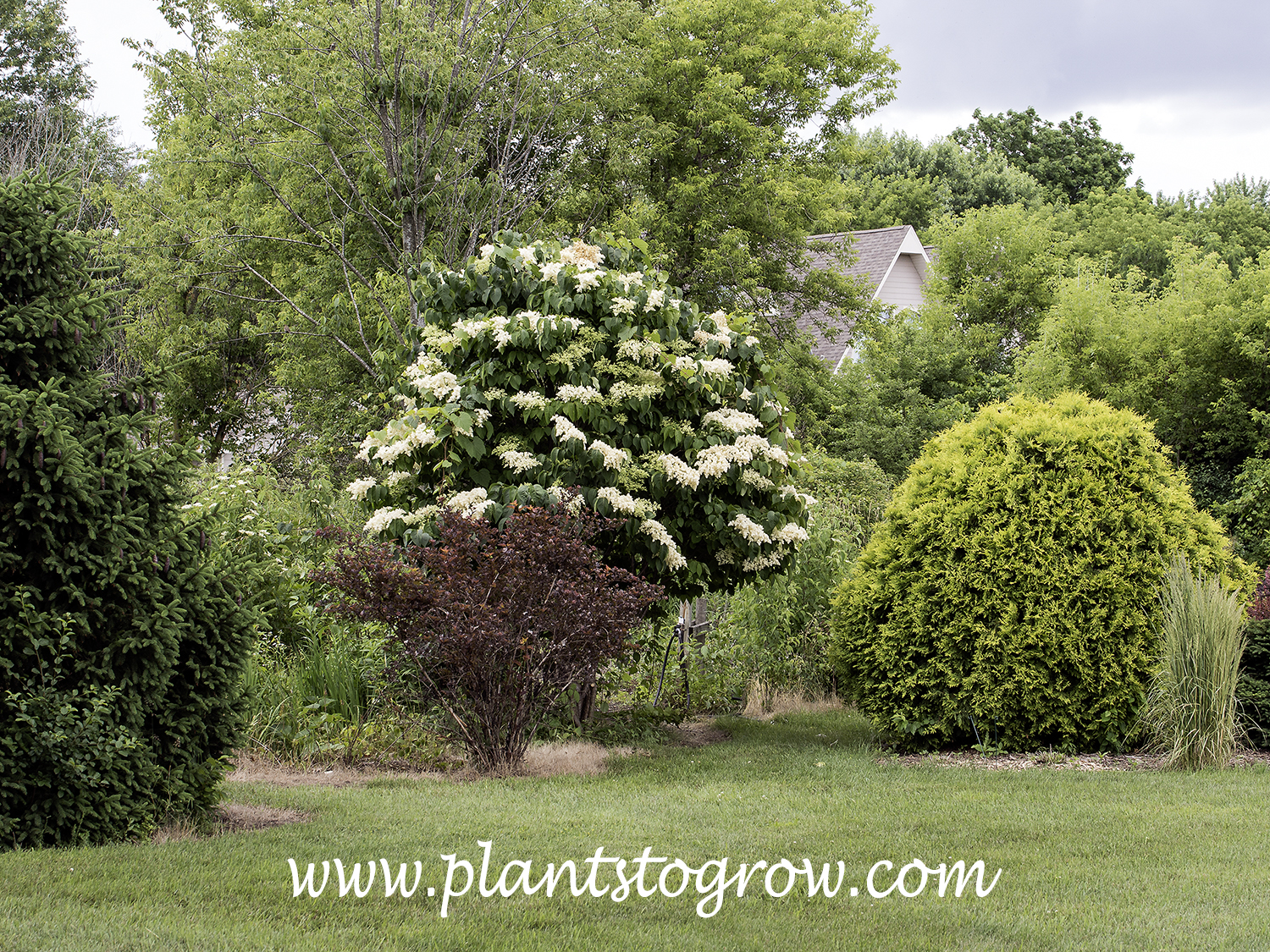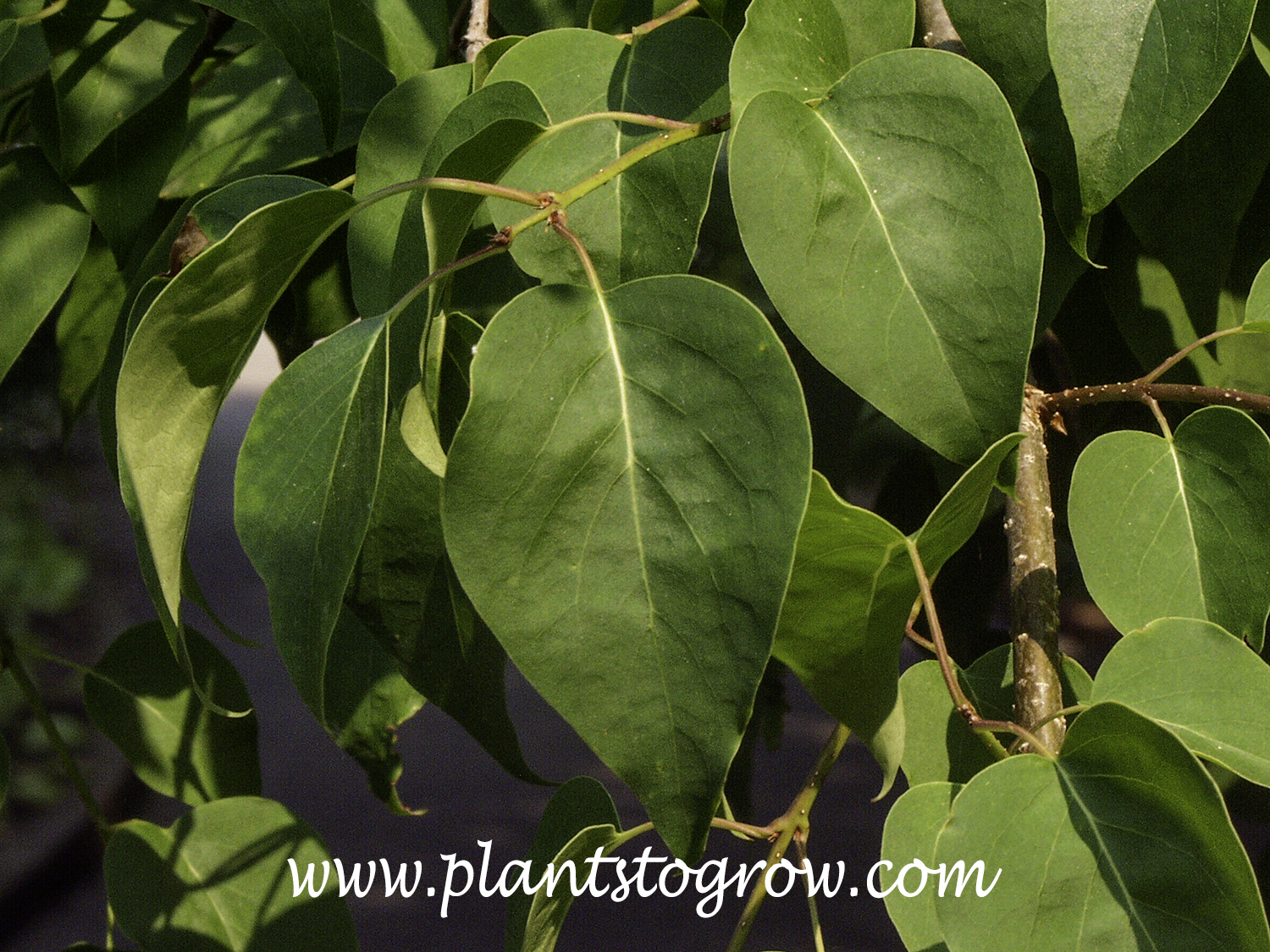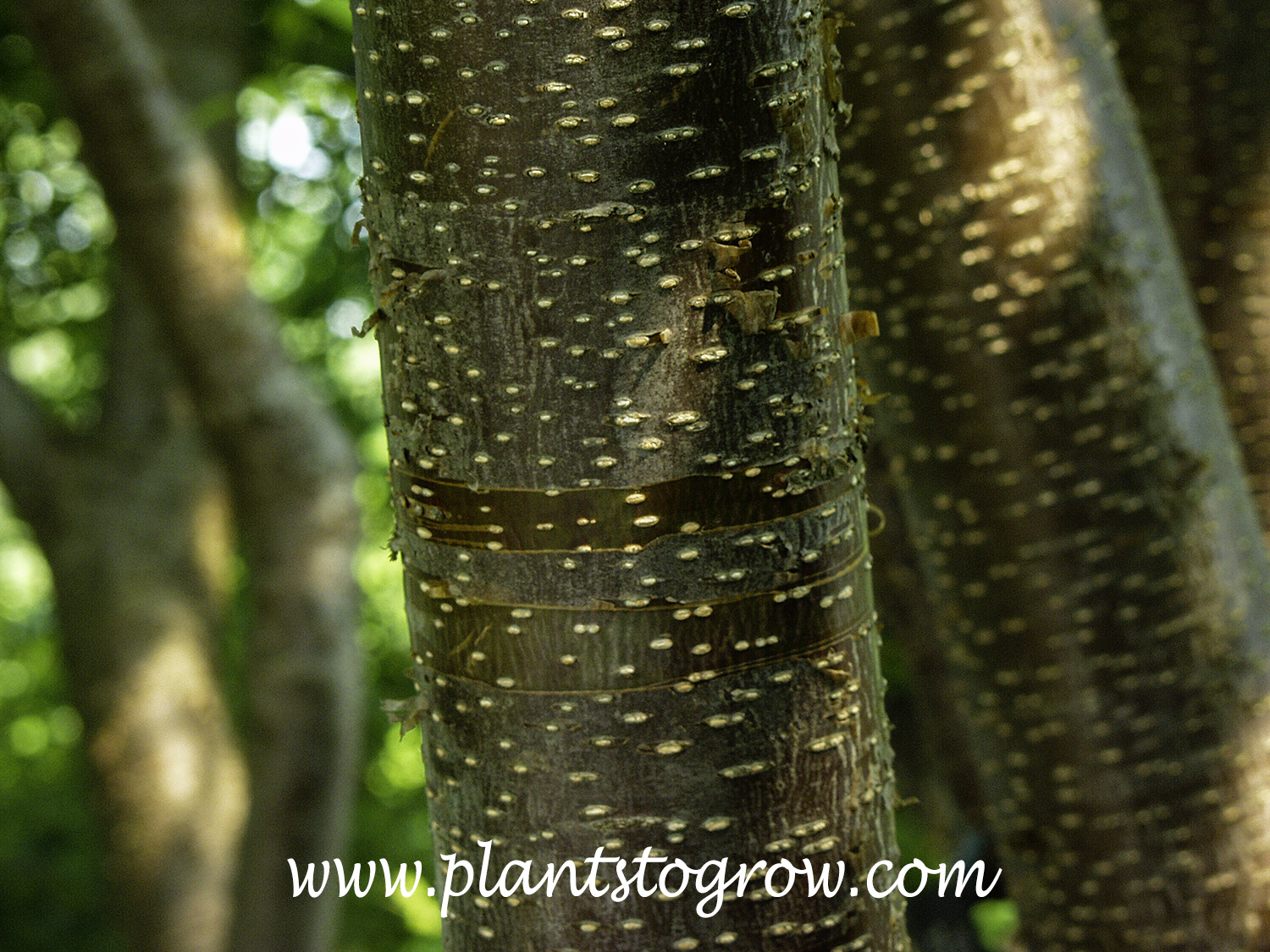| Description | Amur Lilac (Syringa reticulata) is a medium-sized tree blooming with white flowers in early to mid-June. |
|---|---|
| Pronunciation | (si-RING-a) |
| Plant Type | Trees Deciduous, Site author's observations |
| Hardiness Zone | 3-7 |
| Sunlight | full |
| Moisture | average |
| Soil & Site | average, ph adaptable |
| Flowers | large panicles of white flowers fading to brown, privet-like fragrance, mid-June, after the other lilacs |
| Leaves | dark green, elliptic-acute, entire margin |
| Stems | younger bark is reddish-brown, prominent lenticels can have exfoliating bark |
| Dimensions | 15-25 feet spread by 20-30 feet in height, grown as a single stem or clump |
| Maintenance | prune after flowering, remove dead wood and prune to maintain shape. |
| Propagation | difficult from seeds or cuttings |
| Misc Facts | Syringa is Greek meaning "pipe", in reference to the hollow stems. Native to Japan, introduced around 1878. |
| Author's Notes | Mature Japanese Tree Lilacs are spectacular when in full bloom. As the blossoms start to fade they turn a light brown color which may or may not have some ornamental value. This is definitely a good small tree for the urban landscape in hardiness Zone #5. |
| Notes & Reference | #01-Manual of Woody Landscape Plants (Michael Dirr), #03-The Hillier Manual of Trees and Shrubs (Hillier Nursery), #55-The Garden Book for Wisconsin (Melinda Myers) |

Cart
